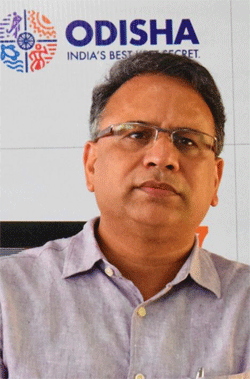Over the next three years, Odisha plans to maintain a fiscal deficit consistent with the requirement of the OdishaFiscal Responsibility and Budget Management (FRBM) legislation.
The overview of Fiscal Strategy for the 2022-23 Budget, reveals that such a consistent approach will produce sustainable Medium Term Debt Stock trajectory.
Vishal Dev, Principal Secretary Finance is hopeful that Odisha’s overall fiscal outlook will remain stable over the Medium Term. During the discussion on strategizing budget formulation with senior officials, it came to fore that Debt Stock is expected to remain well within the FRBM prescribed limit of 25 Percent of GSDP in Medium Term.
However, if there is need for additional fiscal stimulus in 2022-23 to support economy, the State can use the fiscal space generated in Financial Year 2021-22, Mr.Dev said, adding this has been allowed to carry forward to the next year.
FRBM Act, 2005 mandates to generate revenue balance and contain fiscal deficit within 3.5 Percent of GSDP and State can avail additional borrowing on account of unused fiscal deficit during previous years.
A cap on borrowing was one of the major areas of concern for the State when Debt Stock was at an unsustainable level. However, with improved revenue performance, expenditure rationalization and debt restructuring, the State’s dependence on borrowing has been reduced substantially.
The Debt Stock and Interest Payment liability are near much below the threshold of sustainable parameters, officials say.
Budget formulation is now based on the Micro-Economic outlook and fiscal framework envisaged in the fiscal responsibility legislation with an objective to counter deficit bias and maintain sustainable fiscal position. It also takes into account implications of key public policy decisions and factors in the risks to public finances.
Thus maintenance of fiscal sustainability is the primary concern of the budget formulation process. The current economic slowdown has brought down the level of revenue surplus. However, State’s focus would be on arresting the decline in the level of revenue surplus through appropriate revenue augmentation and revenue expenditure rationalization measures, said a senior official.
Earlier because of resource constraints, it was not possible to provide adequate funds for Capital Expenditure. With improved fiscal space, there has been substantial increase in Capital Spending.
The Capital Outlay which was only Rs.853 Crore in 2003-04 has increased to about Rs.26,000Crore in 2021-22. The Capital Outlay as Percentage to GSDP has increased from 1.3 Percent in 2003-04 to about 4 Percent in 2021-22.
The share of Revenue Expenditure has decreased from about 92 Percent in 2000-01 to about 84 Percent in 2021-22, The average revenue expenditure has been contained within 12 Percent during 2000-2020 inspite of impact of revision of pay and pension recommendations of Sixth and Seventh Pay Commissions.
On the other side, Capital spending has shown an average growth of about 15 Percent during the same period.


